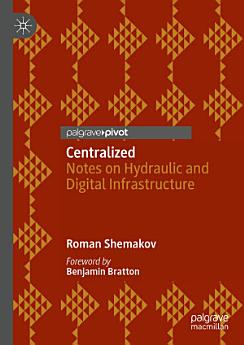Centralized: Notes on Hydraulic and Digital Infrastructure
About this ebook
Centralized examines the oldest and the most contemporary forms of large-scale infrastructure: water and the internet. Drawing on archival documents, engineering blueprints, financial records, and interviews, the book analyzes eight transformative projects over two millennia across the United States, China, Turkey, and Russia. From the Dujiangyan irrigation canals to the creation of TCP/IP protocols, the case studies demonstrate how engineering networks produce predictable bureaucratic structures. Despite their technological differences, hydraulic and digital networks share a unifying logic of design, finance, and administration—one that ultimately consolidates authority.
Built on the work of Keller Easterling, Norbert Wiener, Taisu Zhang, and Paul Edwards, Centralized offers a critical historical perspective on the relationship between technical and social systems.
Preface by Benjamin Bratton. Illustrations by Flora Weil.
About the author
Roman Shemakov is an infrastructure professional.




